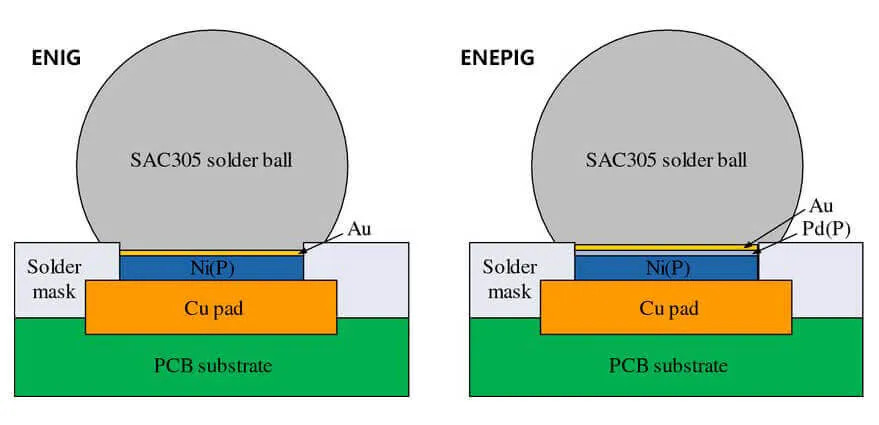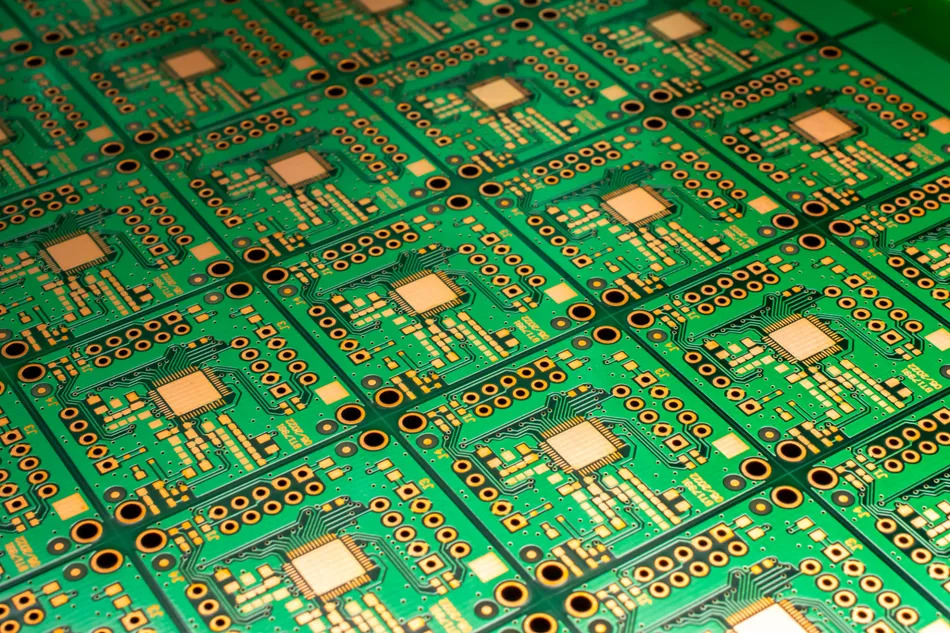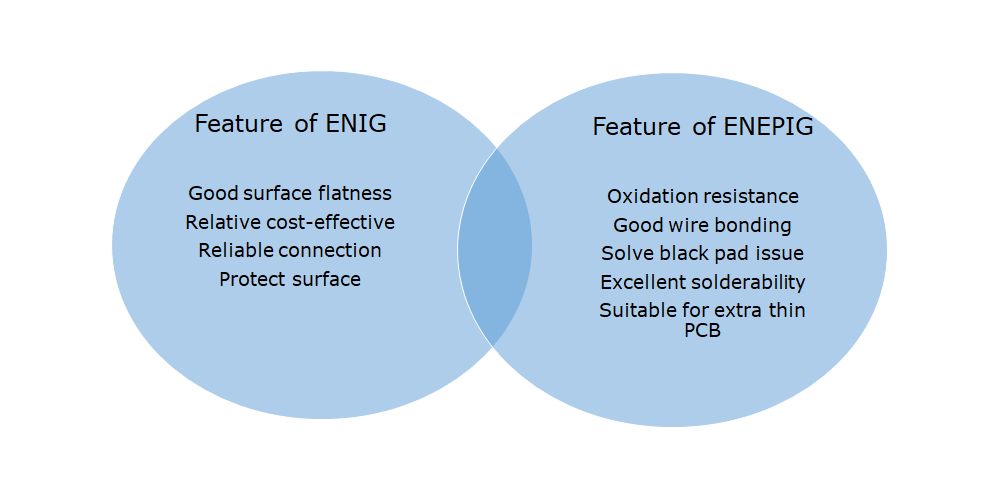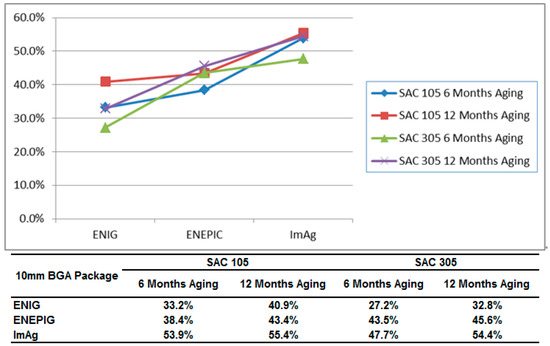When it comes to choosing the right surface finish for printed circuit boards (PCBs), the decision between ENIG (Electroless Nickel Immersion Gold) and ENEPIG (Electroless Nickel Electroless Palladium Immersion Gold) can be critical. Both finishes offer unique benefits, but which one is best for your project? In this detailed guide, we’ll provide a clear ENIG ENEPIG comparison to help you make an informed choice based on factors like cost, reliability, and specific applications. Whether you’re prioritizing ENEPIG advantages, evaluating ENEPIG cost, exploring ENEPIG applications, or assessing ENEPIG reliability, this post covers it all.
Let’s dive into the world of PCB surface finishes and break down the differences, benefits, and ideal use cases for ENIG and ENEPIG to ensure your next project achieves optimal performance and durability.
What Are PCB Surface Finishes and Why Do They Matter?
A PCB surface finish is a protective coating applied to the copper traces of a circuit board to prevent oxidation, ensure solderability, and enhance the board’s overall performance. Without a proper finish, copper can corrode when exposed to air, leading to poor connections and potential failures in electronic devices. Surface finishes also play a role in facilitating soldering during assembly and supporting wire bonding in advanced applications.
ENIG and ENEPIG are two of the most popular surface finishes in the industry due to their excellent solderability and compatibility with modern, high-density PCB designs. Understanding their differences is key to selecting the right option for your specific needs, whether you’re working on consumer electronics, aerospace systems, or medical devices.

What Is ENIG? Understanding the Basics
ENIG, or Electroless Nickel Immersion Gold, is a widely used surface finish that consists of two layers: a layer of nickel (typically 3-6 micrometers thick) deposited through an electroless process, followed by a thin layer of immersion gold (about 0.05-0.1 micrometers thick). The nickel acts as a barrier to protect the underlying copper from corrosion, while the gold layer ensures excellent solderability and prevents the nickel from oxidizing.
ENIG is favored for its flat surface, which is ideal for fine-pitch components and surface-mount technology (SMT). It also supports multiple reflow soldering cycles without degrading, making it a reliable choice for many applications. However, one known drawback is the potential for "black pad" issues—a defect caused by corrosion of the nickel layer during the gold immersion process, which can weaken solder joints and reduce reliability.
What Is ENEPIG? A Step Beyond ENIG
ENEPIG, or Electroless Nickel Electroless Palladium Immersion Gold, builds on the foundation of ENIG by adding a third layer: palladium. This layer, typically 0.05-0.1 micrometers thick, is deposited between the nickel and gold layers. The palladium acts as an additional barrier, preventing the gold immersion process from corroding the nickel layer and effectively eliminating the black pad issue that plagues ENIG.
Due to this added layer, ENEPIG offers superior ENEPIG reliability and enhanced performance in demanding environments. It also provides excellent wire bonding capabilities, making it a preferred choice for high-reliability applications. However, the additional palladium layer does increase the overall ENEPIG cost, which may be a consideration for budget-conscious projects.

ENIG vs. ENEPIG: A Detailed Comparison
To help you decide between these two finishes, let’s break down their differences across several key factors: composition, advantages, cost, applications, and reliability. This ENIG ENEPIG comparison will provide the clarity you need for optimal PCB surface finish selection.
1. Composition and Process
As mentioned earlier, ENIG consists of a nickel layer followed by a thin gold layer. The electroless nickel process ensures uniform coverage, even on complex board designs, while the immersion gold provides a solderable surface. The process is relatively straightforward and widely available, contributing to its popularity.
ENEPIG, on the other hand, introduces a palladium layer between the nickel and gold. This extra step in the manufacturing process adds complexity but also enhances the finish’s durability and resistance to corrosion. The palladium layer is applied through an electroless process, ensuring consistent thickness and coverage across the board.
2. Advantages of Each Finish
ENIG Advantages:
- Cost-effective compared to ENEPIG, making it suitable for a wide range of projects.
- Excellent flatness for fine-pitch and SMT components, ensuring precise soldering.
- Good shelf life, with resistance to oxidation for up to 12 months under proper storage conditions.
- Compatible with multiple reflow soldering cycles without significant degradation.
ENEPIG Advantages:
- Eliminates the black pad defect, a common issue with ENIG, due to the protective palladium layer.
- Superior wire bonding capabilities, especially for gold and aluminum wire bonding, with bond pull strengths often exceeding 10 grams.
- Enhanced corrosion resistance, making it ideal for harsh environments.
- Better solder joint reliability, with studies showing up to 30% stronger joints compared to ENIG in high-stress conditions.
The ENEPIG advantages clearly make it a standout choice for applications where reliability and performance are non-negotiable.
3. Cost Considerations
Cost is often a deciding factor in PCB manufacturing, and there’s a notable difference between ENIG and ENEPIG in this regard. ENIG is generally more affordable because it involves fewer materials and process steps. On average, ENIG can cost about 10-20% less per square foot of PCB surface area compared to ENEPIG, though exact pricing depends on board size, complexity, and volume.
The ENEPIG cost is higher due to the additional palladium layer and the more complex manufacturing process. Palladium is a precious metal, and its inclusion can increase material costs significantly. For small-scale or budget-sensitive projects, this added expense may not be justifiable. However, for high-reliability applications where failure is not an option, the investment in ENEPIG often pays off in the long run through reduced defect rates and improved performance.

4. Applications: Where Each Finish Shines
Both ENIG and ENEPIG are versatile, but their ideal ENEPIG applications and ENIG use cases differ based on project requirements.
ENIG Applications:
- Consumer electronics like smartphones, tablets, and laptops, where cost and flatness are critical.
- General-purpose PCBs with moderate reliability needs and standard operating conditions.
- Prototyping and low- to medium-volume production runs where budget constraints are a factor.
ENEPIG Applications:
- High-reliability industries such as aerospace, automotive, and medical devices, where failure can have serious consequences.
- PCBs requiring wire bonding, such as in advanced semiconductor packaging and hybrid circuits.
- Harsh environment applications, including military equipment exposed to extreme temperatures and humidity.
The choice of finish should align with the specific demands of your project. For instance, if you’re designing a medical device that must operate flawlessly for years, ENEPIG’s enhanced reliability makes it the better option.
5. Reliability and Performance
When it comes to ENEPIG reliability, this finish stands out as the superior choice for demanding applications. The palladium layer prevents nickel corrosion, eliminating the black pad issue that can compromise ENIG’s solder joints. Studies have shown that ENEPIG-finished boards can withstand over 1,000 thermal cycles (from -40°C to 125°C) without significant degradation, compared to ENIG boards, which may show solder joint failures after 700-800 cycles under similar conditions.
ENIG is still reliable for many standard applications, offering good performance in controlled environments. However, in high-stress or high-reliability scenarios, its susceptibility to black pad defects can lead to unexpected failures, with failure rates reported as high as 1-2% in some batches under suboptimal process control.

Key Factors to Consider When Choosing Between ENIG and ENEPIG
Selecting the right surface finish for your PCB involves balancing several factors. Here are the main considerations to keep in mind during your ENIG ENEPIG comparison:
- Budget: If cost is a primary concern, ENIG offers a more affordable solution without sacrificing too much performance for standard applications.
- Reliability Needs: For projects where ENEPIG reliability is critical, such as in medical or aerospace sectors, the higher cost of ENEPIG is often worth the investment.
- Assembly Requirements: If your design includes fine-pitch components or requires wire bonding, ENEPIG’s superior capabilities may be necessary.
- Environmental Conditions: Boards exposed to harsh conditions, like high humidity or extreme temperatures, will benefit from ENEPIG’s enhanced corrosion resistance.
Practical Tips for PCB Surface Finish Selection
To ensure you choose the best finish for your project, follow these practical steps:
- Define your project’s specific requirements, including operating environment, reliability needs, and assembly processes.
- Evaluate your budget constraints and determine if the added ENEPIG cost aligns with the benefits for your application.
- Consult with your PCB manufacturing partner to understand their process capabilities and quality control measures for both ENIG and ENEPIG finishes.
- Test prototypes with both finishes if possible, especially for high-stakes projects, to compare performance under real-world conditions.
Conclusion: Making the Right Choice for Your PCB Project
Choosing between ENIG and ENEPIG for your PCB surface finish comes down to understanding your project’s unique needs. ENIG offers a cost-effective, reliable solution for many standard applications, with excellent flatness and solderability. However, ENEPIG takes performance to the next level with its superior ENEPIG reliability, resistance to defects like black pad, and suitability for high-reliability ENEPIG applications.
By carefully weighing the ENEPIG advantages against the ENEPIG cost, you can make an informed decision that ensures the long-term success of your PCB design. Whether you’re working on consumer gadgets or critical systems for aerospace, this ENIG ENEPIG comparison provides the insights you need to select the optimal surface finish.
At ALLPCB, we’re committed to helping you achieve the best results for your PCB projects. Our expertise in surface finishes ensures that whether you choose ENIG or ENEPIG, your boards will meet the highest standards of quality and performance.
 ALLPCB
ALLPCB







